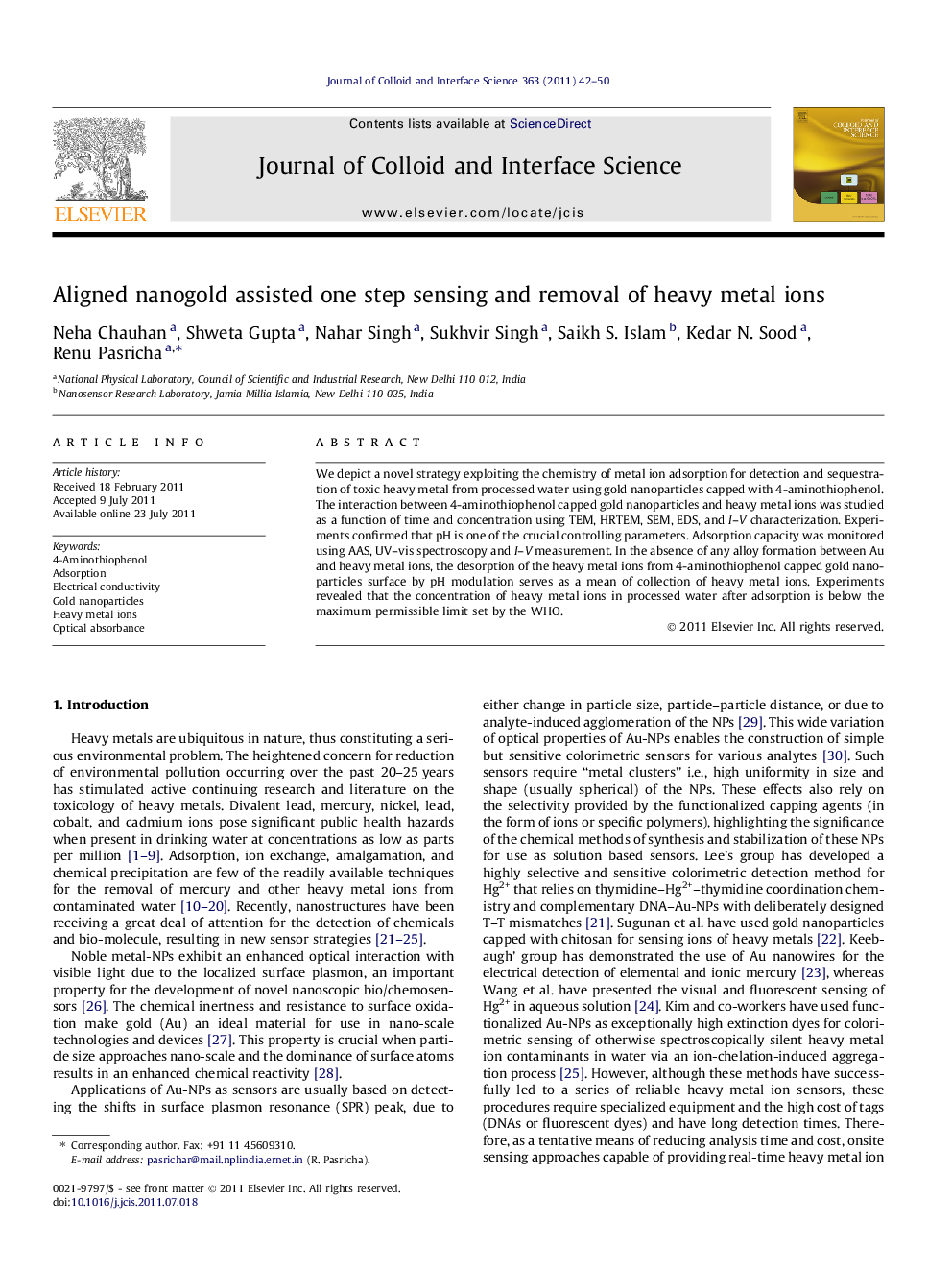| Article ID | Journal | Published Year | Pages | File Type |
|---|---|---|---|---|
| 608489 | Journal of Colloid and Interface Science | 2011 | 9 Pages |
We depict a novel strategy exploiting the chemistry of metal ion adsorption for detection and sequestration of toxic heavy metal from processed water using gold nanoparticles capped with 4-aminothiophenol. The interaction between 4-aminothiophenol capped gold nanoparticles and heavy metal ions was studied as a function of time and concentration using TEM, HRTEM, SEM, EDS, and I–V characterization. Experiments confirmed that pH is one of the crucial controlling parameters. Adsorption capacity was monitored using AAS, UV–vis spectroscopy and I–V measurement. In the absence of any alloy formation between Au and heavy metal ions, the desorption of the heavy metal ions from 4-aminothiophenol capped gold nanoparticles surface by pH modulation serves as a mean of collection of heavy metal ions. Experiments revealed that the concentration of heavy metal ions in processed water after adsorption is below the maximum permissible limit set by the WHO.
Graphical abstractA simple technique to detect and remove heavy metal ions in water samples up to 10−12 M using amine functionalized gold nanoparticles by picking a signature in the optical and electrical properties.Figure optionsDownload full-size imageDownload high-quality image (55 K)Download as PowerPoint slideHighlights► A simple protocol to detect and remove toxic metal ions from H2O using –NH2 functionalized linearly assembled Au-NPs. ► The detection of heavy metal ions ⩾10−12 M is possible using these linearly assembles Au-NPs. ► It has been shown that by modulating the pH of the NP solution, the degree of adsorption can be modulated. ► The complexation method can be extended to matrix based separation of heavy metal ions from water.
